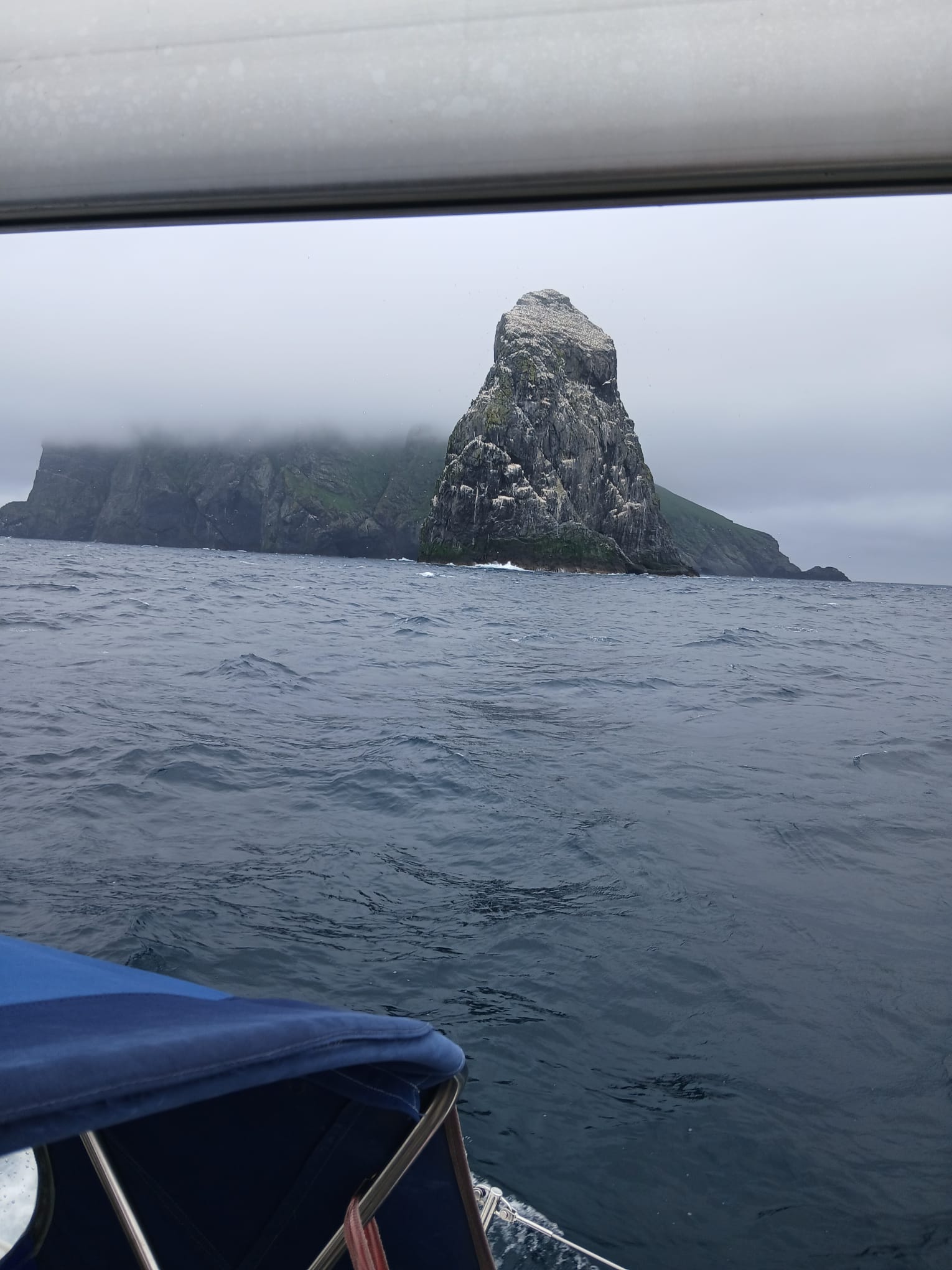After a particularly lively (and, if I'm honest, somewhat undignified) disembarkation from the small tender onto the main island of Hirta, we finally set foot on the hallowed ground of St Kilda. The journey across the open Atlantic had been a test of endurance, but the sheer anticipation of being here, on this remote, iconic archipelago, washed away any lingering seasickness.![![enter image description here]](https://www.tractors-to-tillers.com/content/images/20250714182827-DSC_0540.JPG)
With the ranger's words echoing in our minds, our next mission was clear: puffins. These charismatic, clown-faced birds were high on everyone's must-see list. The ever-present St Kilda mist, however, had other ideas, swirling around us, obscuring the higher slopes where the puffin colonies typically reside. We started our ascent, spirits undimmed, hoping for a break in the weather.
And then, as if by magic, the mist lifted, just enough. A window of opportunity opened, revealing the steep, grassy incline ahead. We scrambled upwards, our eyes scanning the cliff face, and there they were! A scattering of vibrant orange beaks and comical waddles. We found a suitable spot, hunkering down amongst the tussocks, and spent a good while simply lying there, mesmerized. The puffins, seemingly unperturbed by our presence, went about their busy lives – preening, digging burrows, and occasionally taking clumsy, flapping flights to the sea below. It was a privilege to witness them in their natural habitat, a moment of pure, unadulterated joy.
Our idyllic puffin-watching, however, was dramatically interrupted. A shadow fell over us, and with a rush of wind and a flash of dark feathers, a Great Skua – often called "pirates of the sky" – swooped in. The puffins, sensing danger, scattered in a flurry of panic. It was a stark reminder of the harsh realities of nature's food chain, and while a little disheartening for our feathery friends, a powerful demonstration of the wildness of St Kilda.
As quickly as it had cleared, the mist descended once more, thick and enveloping, signalling our cue to retreat from the higher ground. We carefully made our way back down towards the village, the visibility dropping dramatically with every step.
Our next stop was a fascinating journey back in time: the museum at Number 3, The Street. This humble building, one of the restored houses of the former village, now serves as a poignant testament to the lives of the St Kildan people. Inside, the exhibits transport you to a bygone era. We saw tools, clothing, photographs, and personal effects that spoke volumes about the daily struggles and simple joys of a community living on the edge of the world. The attention to detail in the restoration and the thoughtful curation of the artefacts made it an incredibly immersive and moving experience. It provided a vital human context to the dramatic landscapes we had just witnessed and left us with a profound respect for the resilience and unique culture of those who called St Kilda home.
Leaving St Kilda, the feeling was one of deep satisfaction mixed with a touch of melancholy. It's a place that gets under your skin, a testament to both nature's raw power and humanity's enduring spirit. Our visit, from the unceremonious landing to the fleeting glimpse of puffins and the poignant visit to the museum, was an unforgettable chapter in our adventure to the edge of the world. Now we just had to face the journey back across the North Atlantic !

